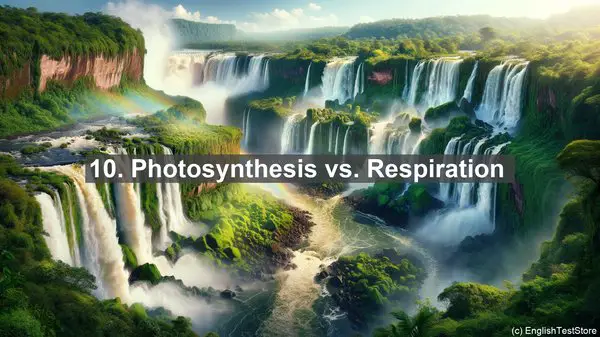Introduction
Welcome to today’s lesson on ecosystem ecology. In this lesson, we’ll be focusing on the top 10 commonly confused words in this field. Understanding these terms is essential for a solid foundation in ecology. So, let’s dive in!
1. Ecosystem vs. Habitat
The first pair of words that often cause confusion is ‘ecosystem’ and ‘habitat.’ While ‘habitat’ refers to the physical environment where an organism lives, ‘ecosystem’ encompasses the interactions between organisms and their environment, including the biotic and abiotic factors.
2. Food Chain vs. Food Web
Next up, we have ‘food chain’ and ‘food web.’ A ‘food chain’ is a linear representation of the transfer of energy and nutrients in an ecosystem, while a ‘food web’ is a more complex, interconnected network of multiple food chains.
3. Producer vs. Consumer
Moving on, ‘producer’ and ‘consumer’ are often mixed up. ‘Producers,’ such as plants, are capable of photosynthesis and can synthesize their own food. ‘Consumers,’ on the other hand, rely on other organisms for their energy and nutrient requirements.
4. Decomposer vs. Detritivore
Now, let’s clarify the difference between ‘decomposer’ and ‘detritivore.’ Both play crucial roles in decomposition, but ‘decomposers’ primarily break down organic matter into inorganic substances, while ‘detritivores’ consume the organic matter directly.
5. Biotic vs. Abiotic
In the context of an ecosystem, ‘biotic’ refers to the living components, such as plants and animals, while ‘abiotic’ encompasses the non-living factors, like temperature, sunlight, and soil composition.

6. Population vs. Community
When discussing groups of organisms, ‘population’ and ‘community’ are distinct terms. A ‘population’ refers to a group of individuals of the same species in a given area, whereas a ‘community’ includes multiple populations of different species coexisting in an ecosystem.
7. Ecosystem vs. Biosphere
While ‘ecosystem’ refers to a specific, localized area with its unique set of interactions, ‘biosphere’ encompasses the entire zone on Earth where life exists, including the atmosphere, hydrosphere, and lithosphere.
8. Niche vs. Habitat
Another commonly confused pair is ‘niche’ and ‘habitat.’ While ‘habitat’ refers to the physical location, ‘niche’ includes the organism’s role, interactions, and the resources it utilizes within that habitat.

9. Primary vs. Secondary Succession
When discussing ecological succession, ‘primary’ and ‘secondary’ are key terms. ‘Primary succession’ occurs in an area devoid of life, such as a newly formed volcanic island, while ‘secondary succession’ happens in an area that has been disturbed but still retains some soil and life remnants.
10. Photosynthesis vs. Respiration
Lastly, let’s clarify ‘photosynthesis’ and ‘respiration.’ ‘Photosynthesis’ is the process by which plants convert sunlight, carbon dioxide, and water into glucose and oxygen, while ‘respiration’ is the process by which organisms, including plants, break down glucose to release energy.
